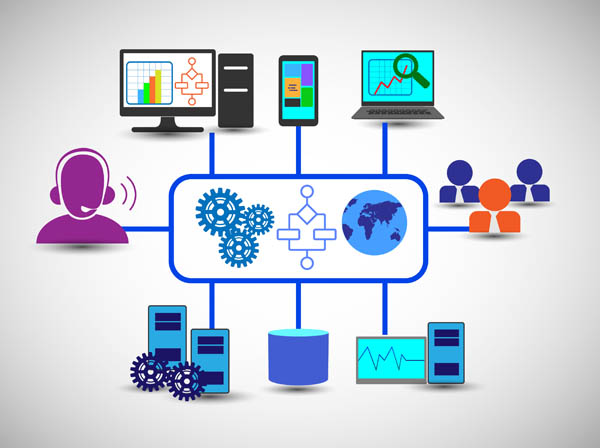摘要: The purpose of a Master Data Management program is to organize an organizations most important data assets, allowing them to be used efficiently and creatively. The choice of organizational styles determines how the data performs during an analysis, when building new relationships, and while making decisions that increase profits.

▲圖片標題(來源:dataversity)
The Multi-Domain Competitive Edge
Gartner has determined a large number of businesses are switching to multi-domain Master Data Management strategies. These strategies can help to resolve problems more quickly, discover new relationships, and develop new growth opportunities. Multi-domain solutions have the potential to speed up the time-to-market process as new products are connected with customers and suppliers in more efficient ways.
Historically, the selection of MDM strategies was focused on specific business requirements. The most popular solution was “one” data domain that performed a single business process, such as customer data or product data. However, a single-domain MDM solution can no longer handle today’s data-driven challenges. Data has continuously become more interconnected and interdependent. While a customer’s data would once have contained a simple demographic, or a transaction history, now it includes a customer’s preferences and buying habits. Other useful domains include digital assets, supplier data, hierarchies, and reference data.
Financial services, retail, and healthcare were the first industries to use multi-domain MDM solutions, primarily in response to compliance requirements, products, risk management, and information rationalization. The healthcare industry, for example, has begun implementing these strategies to simplify a physician’s job by linking a patient’s identity data with reference data, tying multiple IT systems into one single point of reference. The financial industry benefited from multi-domain MDM by augmenting data regarding their existing customer information. The retail industry uses it to improve the customer’s experience. Multi-domain MDM has allowed consumer packaged goods companies to develop a holistic view of their operations, boosting revenues and setting new standards for inventory management.
MDM and Artificial Intelligence
Harshad Keskar predicts data lakes will become the most efficient means of storing data in the future, with the help of AI (artificial intelligence) and ML (machine learning). And it will all be coordinated with an MDM. Data lakes hold large amounts of raw, unstructured data, but their implementation can be a complicated process. For example, loading the data from a legacy system, without any sort transformation, into a system such as Hadoop, can periodically cause chaos. Using the right strategies in delivering and organizing the data can prevent the data lake from turning into a data swamp. Artificial intelligence and machine learning can be used to resolve this problem.
Artificial intelligence can also be used to coordinate the Data Governance and Metadata Management aspects of MDM. Historically, only larger businesses could initiate successful Data Governance programs. They could afford the technology and the manpower. However, AI and ML now make it possible for smaller businesses to benefit from Data Governance as well.
詳見全文: dataversity
若喜歡本文,請關注我們的臉書 Please Like our Facebook Page: Big Data In Finance


留下你的回應
以訪客張貼回應